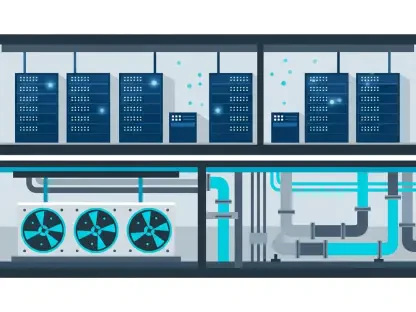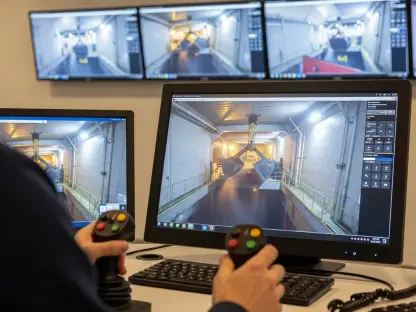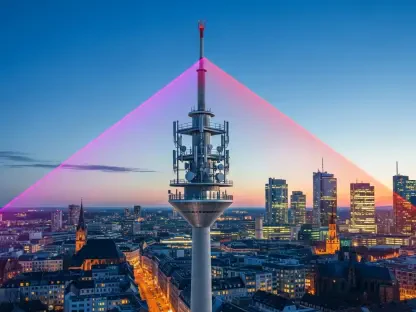What happens when factories don’t just produce goods but think, adapt, and communicate in real time? Across the globe, industrial landscapes are undergoing a seismic shift, driven by technologies so advanced they seem pulled from the pages of science fiction. From smart machines to hyper-connected supply chains, this transformation is not a distant dream but a present reality, reshaping how industries operate and compete on a massive scale. This is the era of Industry 4.0, a revolution that promises to redefine efficiency, safety, and innovation in ways previously unimaginable. Dive into this exploration of a world where digital tools are no longer optional but essential to survival.
Why This Transformation Matters Today
In an era marked by labor shortages and escalating costs, the urgency for industrial reinvention has never been clearer. With global supply chains facing unprecedented disruptions and workforces shrinking due to demographic shifts, Industry 4.0 offers a lifeline through automation and connectivity. Projections indicate that the market for these technologies could reach a staggering $1.6 trillion by 2030, highlighting their pivotal role in addressing modern challenges. This isn’t merely about profit; it’s about creating safer work environments and sustainable practices that resonate with businesses striving to adapt to a complex, fast-evolving landscape.
The significance of this shift extends beyond economics to the very fabric of industrial operations. Companies that fail to embrace these advancements risk falling behind, while those that do are already seeing transformative results. This revolution is not just a trend but a fundamental restructuring of how value is created and delivered across sectors, making it a critical focus for leaders and innovators worldwide.
The Core Drivers of Industry 4.0
At the heart of this industrial upheaval lie several key technologies, each playing a distinct role in reshaping global ecosystems. Private 5G networks stand out as a cornerstone, with spending expected to hit $5 billion by 2028, growing at an impressive 41% compound annual growth rate from 2025 onward. These networks enable real-time data transfer and seamless machine communication, as evidenced by productivity boosts of 20-90% in major manufacturing hubs across Asia and North America. They are fast becoming the backbone of smart operations, ensuring that latency and connectivity issues are relics of the past.
Another vital component is mission-critical push-to-talk (PTT) communication, evolving from outdated radio systems to broadband-enabled solutions. Revenue for PTT technologies is forecasted to reach $12 billion by 2028, driven by an 11% annual growth rate from 2025. Used in high-stakes environments like public safety networks in South Korea and industrial complexes in Europe, these systems ensure reliable coordination when every second counts. Their adaptability across sectors underscores their importance in maintaining operational integrity under pressure.
Complementing these is the Industrial Internet of Things (IIoT), alongside robotics and big data analytics, which command a 39.3% market share in 2025. This trio drives predictive maintenance and efficiency in smart factories, with North America leading the charge through robust research and development in artificial intelligence. Together, these pillars are not just enhancing existing processes but creating entirely new paradigms for industries ranging from logistics to healthcare, setting the stage for a future where connectivity is king.
Real Stories, Real Impact
Numbers tell only part of the story; the human and operational impacts bring it to life. Industry experts emphasize the critical nature of these advancements, with one analyst noting, “Private 5G networks have shifted from a luxury to a necessity for enterprises aiming to remain competitive.” This sentiment is echoed in reports of operational cost reductions of up to 40% among industrial giants after adopting 5G solutions, showcasing tangible financial benefits that ripple through entire supply chains.
Beyond the balance sheets, safety improvements in warehouses and factories highlight the profound human element of this transformation. A manager from a leading logistics firm shared that integrating IIoT systems drastically reduced workplace accidents by predicting equipment failures before they occurred. Such firsthand accounts reveal how these technologies are not merely tools but lifesavers, addressing both efficiency and the well-being of workers in high-risk environments.
These insights are further supported by research indicating that automation helps mitigate the impact of aging workforces, a pressing demographic challenge. As industries grapple with fewer hands on deck, the integration of robotics and digital systems offers a way to maintain output without compromising quality. The real-world implications paint a compelling picture of a technological leap that serves as both an economic driver and a societal safeguard.
Overcoming Barriers to Adoption
Transitioning to Industry 4.0 might seem daunting, but practical steps can ease the journey for businesses of all sizes. Assessing connectivity needs is a starting point—identifying operational gaps where real-time data could enhance efficiency is crucial. Partnering with providers to deploy scalable private 5G networks, inspired by large-scale rollouts in Asia, can ensure that infrastructure keeps pace with demand while minimizing upfront costs.
Upgrading communication systems also plays a pivotal role. Moving to broadband-enabled PTT solutions, compatible with existing setups, can bolster reliability in critical operations. Drawing from hybrid models like certain European emergency networks, industries can maintain continuity while embracing innovation. This approach ensures that communication remains uninterrupted even in the most demanding scenarios, providing a seamless bridge between old and new systems.
Finally, integrating IIoT for data-driven decisions offers a path to optimize workflows. Starting with pilot projects in high-impact areas like manufacturing, and leveraging government incentives for robotics and cybersecurity, can offset initial investments. Collaboration with regional innovation hubs further helps stay ahead of trends, ensuring that adoption is not just a reaction to change but a proactive strategy for growth and resilience in a digital age.
Charting the Path Forward
Reflecting on the strides made, it becomes evident that Industry 4.0 has fundamentally altered the industrial landscape by weaving connectivity and automation into the core of operations. The journey reveals how technologies like private 5G and IIoT have empowered industries to overcome longstanding challenges, from labor shortages to safety concerns. Each step taken has built a stronger, more responsive ecosystem that prioritizes both efficiency and humanity.
Looking ahead, the focus must shift toward scaling these innovations to reach smaller enterprises and emerging sectors. Governments and industry leaders should prioritize accessible funding and training programs to democratize access to these tools, ensuring that the benefits of this revolution are not confined to giants alone. By fostering collaboration and knowledge-sharing, the groundwork is laid for a future where every industry can harness the power of Industry 4.0 to thrive in an ever-changing world.









